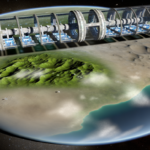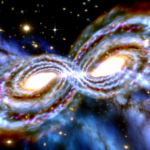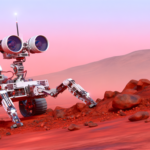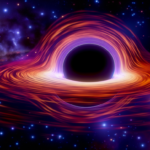Introduction to Space Colonization Definition and Scope Space colonization refers to the establishment of permanent human habitats outside Earth. This concept encompasses a wide range of activities, including the construction of space stations, lunar bases, and settlements on other planets and celestial bodies. The scope of space colonization extends beyond mere exploration; it involves […]
astrophysics
Taming Gravity is all about the possibility through science and technology to harness gravity. If we accomplish this we will then have the means to travel to the stars.
Of course, to do this will involve knowledge of astrophysics.
So, here at Taming Gravity we include inspiring news and breakthroughs happening in the field of astrophysics.
This exoplanet has metal rain and 2,400C temperatures
Exoplanets are the term used to describe planets that orbit bodies other than our own sun. These celestial entities have temperatures that range to such phenomenal heights that the intense heat quite literally rips apart some of the molecules in their atmospheres. These uber-hot exoplanets are also sometimes called ultra-hot Jupiters, because they resemble the […]
Cosmic Inflation: Exploring the Rapid Expansion of the Early Universe
Introduction to Cosmic Inflation Definition and Concept Cosmic inflation refers to a theory in physical cosmology that proposes a period of extremely rapid exponential expansion of the universe during its very early moments, specifically within the first fraction of a second after the Big Bang. This theory was introduced to address several unresolved issues […]
Life on Mars search could be misled by false fossils
Searching for signs of life, whether current, or fossilized, has been a NASA mission for sometime now. Recently, data culled by expeditions to the planet Mars has proven problematic vis a vis this goal. The problem is that certain seemingly useful specimens found on the red planet may in fact not be fossils at all. […]
NASA Scientists Think ‘Singing Trees’ Can Bring Us Closer to Another World
Some NASA scientists have collectively devised a project they call, “Tree of Life.” The project is an adjunct to a bigger project that involves designing a rocket that will have the capacity to get to Proxima B, an exoplanet 4.2 light years distant from Earth. Unlike many Jupiter-like exoplanets, Proxima B has a surface temperature […]
Mars and Beyond: The Role of Robotic Explorers in Interplanetary Missions
Introduction Overview of Interplanetary Missions Interplanetary missions have long been a cornerstone of humanity’s quest to understand the cosmos. These missions involve sending spacecraft to other planets, moons, and celestial bodies within our solar system to gather data, conduct experiments, and explore unknown terrains. From the early flybys of the 1960s to the sophisticated […]
Scientists discover ‘superionic ice,’ a new form of water may lurk inside alien planets
Scientific research dealing with phenomena on celestial bodies and distant planets is almost guaranteed to yield interesting results. The newest experiment exposed a droplet of water squeezed between diamonds to an extremely powerful laser, which brought the temperature of water to the levels found on some stars. The result was a new water phase, very […]
Event Horizons: Venturing Beyond the Edge of Black Holes
Introduction to Black Holes and Event Horizons What is a Black Hole? A black hole is a region in space where the gravitational pull is so intense that nothing, not even light, can escape from it. This phenomenon occurs when a massive star collapses under its own gravity, compressing its mass into an infinitely […]
“Alien” invasions and the need for planetary biosecurity
When we explore space, we expose ourselves and our planet to the risk of an invasion. However, when we talk about this risk, we are not really thinking about some alien life form attacking humans. We are considering contamination on a microbiological level that can threaten our species, both animal and plants. The danger is […]
Russian anti-satellite missile test was the first of its kind
The latest test conduct by Russia aimed at destroying satellites marked an important point in the series of tests. This is the first time that such test was a complete success, resulting in destruction of one of the Russia’s own satellites. Concurrently, Russians also deployed technology that does not result in destruction of intended target. […]










